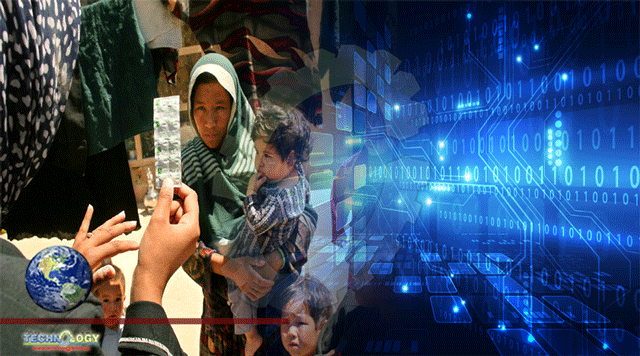In the era of smart cities, taking on public health and the accessibility of healthcare is a different game. Now, advanced technologies stand to play roles in implementing greater solutions. But as a pandemic ravages public health across the world, how can technology make a real and measurable difference?

It all comes down to the tools and practices health professionals, business leaders, and public officials employ when integrating advancing technologies with accessible public services. From transportation to healthcare, tech is here to help streamline accessible services and in turn promote better public health and transparency of health challenges.
As the world still battles COVID-19, these are just a few of the new technologies that are transforming public health and societal accessibility for a safer future.
1. Artificial intelligence
Artificial Intelligence (AI) drives many of the technological innovations of the modern age. It represents systems and software that can apply complex algorithms towards decision-making processes, using existing data to form a basis of understanding similarly to how the human mind functions. However, AI can explore and evaluate massive data sets in an instant.
In public health, subfields of AI are being applied in innovative processes. These are just a few of the AI-powered functions transforming care solutions:
- Machine Learning
- Natural Language Processing (NLP)
- Robotics
By embracing these technologies, care provides are revolutionizing public health. For instance, machine learning and NLP help providers make use of telehealth systems, collating data and even making diagnoses all through a virtual appointment. This gives the 15-20 percent of Americans living in underserved rural communities new access to preventative care.
2. 5G devices
Along with AI tools that make care accessibility greater than ever before, the fifth generation of wireless networking technology (referred to commonly as 5G) is improving the potential of care. 5G is powerful, but in few industries is it as beneficial as it is in healthcare, where wearables and other Internet of Things (IoT) devices are already changing how we are managing our health.
IoT has an impressive outlook—especially where healthcare is concerned. These devices — now connected over 5G networks — offer unprecedented insight into medical information through data tracking. Patients can now monitor their own info and choose what to share with their providers all from a smartphone app, smartwatch, or fitness band.
This democratization of healthcare connectivity through 5G means greater potential in everything from telehealth to hospital information system management. More connected devices equal a greater flow of data, all of which can be applied towards better health solutions in the future.
3. Transportation tech
But public health goes beyond what happens in hospitals and doctors’ offices. In fact, our roads are some of the most important determiners of both public safety and access to social opportunities like work and recreation. Fortunately, new tech is aimed at improving transportation and traffic management as well.
The Organization for Economic Cooperation and Development (OECD) has conducted research that shows that road and safety technologies can reduce injuries and fatalities on roads by 40 percent. This is possible only through the tech innovations now powering better and cleaner transportation.
These are just a few of the transportation technologies making a difference in public health and societal accessibility:
- Intelligent Transportation Systems (ITS) save commuters 175 hours a year by improving traffic flow.
- AI-driven city planning tools bring down the number of traffic accidents and pedestrian deaths.
- Vehicle to Infrastructure (V2I) technology streamlines data communication between cars and infrastructure to provide insights into safer traffic solutions.
4. Healthcare systems
Similarly, the electronic infrastructure surrounding healthcare systems invites all kinds of improvements when it comes to public health and accessibility. Right now, technology is playing a unique role in elevating the way Electronic Medical Records (EMRs) are handled and kept secure. Additionally, improved management systems allow care providers to focus more time on their patients.
Public health experts apply AI and big data through both cloud-based and in-house information systems that then structure, categorize, and maximize the insights derived in the course of treating patients. Some have even pushed for blockchain storage of medical records, which enables information to be more securely stored and protected by the patient’s own access keys. This has the potential of transforming medical data ownership so that patients can more easily choose the care providers and services that are right for them.
As tech evolves, healthcare data and opportunities will only become more equitable owned by patients. At the same time, broader treatment information is more available than ever, empowering tools that public health experts can use in controlling infections, managing emergencies, and even combatting bioterrorism.
5. Geospatial tech
Finally, geospatial technology has entered public health considerations with potential for evolving public safety. This is possible through the unique applications of geospatial tech to record and track data in geographical terms that provide important health insights to citizens.
For instance, geospatial technology can analyze the spread of a disease based on medical data and automatically generate maps of the spread. From here, public health officials can make more informed decisions as to how to handle a crisis. This technology came to be popular during the COVID-19 pandemic, where it informed public response.
A future of accessible public health
All these technologies stand to improve our access to care, safety, and social opportunity. Whether you use 5G to video call your doctor or you create a map based on rates of illness in your area, you can apply these tools in a convenient approach to health that has the added benefit of accumulating more public insights.
With an endless stream of data connecting diseases to patients, viral spread to geographic locations, or fitness measurements to athletes, care experts now have the tools to create safer, healthier societies. Through tech, the future of public health is truly bright.
Originally published by Tech Talks